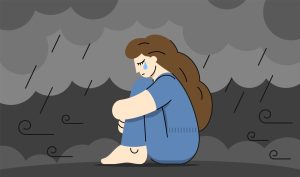Integrative health is becoming more and more popular with various holistic therapies and herbs available for individuals to utilize. It is very important though for individuals who wish to use holistic and integrative practices, therapies and medicines to consult a healthcare professional to ensure things interact properly and safely. Dosing, interactions with other medications and safety for particular individuals are key in determining if something is right for a particular individual. This is is why it is important to find the right Holistic and Integrative Healthcare Specialist to help guide oneself and even work in unison with one’s primary healthcare provider.

The article, “5 Things to Know When Selecting an Integrative Healthcare Provider” by Lauren Bedosky looks at important aspects one should review in finding the guidance of a Holistic and Integrative Healthcare Specialist. She states,
“Complementary and integrative medicine practitioners often provide services and therapies in conventional healthcare settings such as hospitals and clinics. Practitioners can also be found in private practice and at wellness centers. Unfortunately, finding a qualified complementary and integrative medicine practitioner to provide safe and effective care isn’t always easy. But it’s essential to choose carefully, as some complementary therapies may have adverse effects if performed incorrectly.”
“5 Things to Know When Selecting an Integrative Healthcare Provider”. Lauren Bedosky. April 17th, 2023. EveryDayHealth.
To review the entire article, please click here
Commentary
Due to the numerous possible complications and wrong directions one can take with integrative care, it is hence a prerequisite for good health to have proper guidance from a holistic and integrative healthcare specialist.
Introduction to Holistic and Integrative Health Practitioners

Integrative health practitioners are professionals who use a holistic approach to wellness. They look at the whole person, not just their symptoms, and aim to address the root cause of health issues. Integrative health practitioners combine conventional medicine with alternative and complementary therapies to help their patients achieve optimal wellness. They focus on prevention and education, empowering patients to take control of their health.
What is Holistic and Integrative Health and How Does it Differ from Conventional Medicine?
Integrative health is a patient-centered, holistic approach to wellness that combines conventional medicine with alternative and complementary therapies. Integrative health practitioners look at the whole person, not just their symptoms, and aim to address the root cause of health issues. They focus on prevention and education, empowering patients to take control of their health.
Conventional medicine, on the other hand, typically focuses on treating symptoms rather than addressing the root cause of health issues. It tends to rely heavily on pharmaceuticals and other medical interventions. While conventional medicine can be effective in treating acute conditions, it often falls short when it comes to chronic conditions and overall wellness.
Benefits of Working with an Holistic and Integrative Health Practitioner
Working with an integrative health practitioner can have many benefits. Here are just a few:
Holistic Approach
Integrative health practitioners take a holistic approach to wellness. They look at the whole person, including their physical, emotional, and spiritual health, and aim to address the root cause of health issues. This can lead to a more comprehensive and effective treatment plan.
Personalized Care
Integrative health practitioners provide personalized care. They take the time to get to know their patients, their health history, and their goals for wellness. This allows them to tailor their treatment plan to each individual.
Emphasis on Prevention
Integrative health practitioners focus on prevention and education. They work with their patients to identify risk factors and develop strategies to prevent illness and maintain optimal wellness.
Reduced Reliance on Pharmaceuticals
Integrative health practitioners aim to reduce their patients’ reliance on pharmaceuticals. They use a variety of alternative and complementary therapies, such as acupuncture, massage, and herbal medicine, to help their patients achieve optimal wellness.
Improved Quality of Life
Working with an integrative health practitioner can improve your quality of life. By addressing the root cause of health issues and developing a comprehensive treatment plan, they can help you feel better and live a healthier, more fulfilling life.
How to Choose the Right Holistic and Integrative Health Practitioner
Choosing the right integrative health practitioner is an important decision. Here are some tips to help you find the right practitioner for you:
Credentials and Experience
Look for a practitioner who is licensed, certified, or registered in their field. They should also have experience working with patients with your specific health concerns.
Philosophy and Approach
Find a practitioner whose philosophy and approach align with your own. Do they take a holistic approach to wellness? Do they focus on prevention and education? Do they use a variety of alternative and complementary therapies?
Communication and Rapport
It’s important to find a practitioner with whom you feel comfortable communicating. Look for someone who listens to your concerns, answers your questions, and explains things in a way that you can understand.
Referrals and Reviews
Ask for referrals from friends, family, or other healthcare professionals. You can also look for reviews online to get an idea of what other patients have experienced.
Holistic and Integrative Health Practitioner Techniques and Treatments

Integrative health practitioners use a variety of techniques and treatments to help their patients achieve optimal wellness. Here are some examples:
Acupuncture
Acupuncture is a traditional Chinese medicine technique that involves inserting thin needles into specific points on the body. It is used to treat a variety of conditions, including pain, anxiety, and digestive issues.
Massage
Massage therapy involves manipulating the muscles and soft tissues of the body to promote relaxation and alleviate pain. It is often used to treat stress, tension, and musculoskeletal conditions.
Herbal Medicine
Herbal medicine involves using plant-based remedies to treat a variety of conditions. It can be used to alleviate symptoms, boost the immune system, and promote overall wellness.
Mind-Body Therapies
Mind-body therapies, such as meditation and yoga, aim to promote relaxation, reduce stress, and improve overall wellness. They can also be used to treat a variety of conditions, such as anxiety and depression.
Examples of Conditions Treated by Integrative Health Practitioners
Integrative health practitioners can treat a wide range of conditions, including:
Chronic Pain
Integrative health practitioners can help manage chronic pain through acupuncture, massage, and other therapies.
Anxiety and Depression
Integrative health practitioners can help alleviate symptoms of anxiety and depression through mind-body therapies, such as meditation and yoga, as well as herbal medicine and other treatments.
Digestive Issues
Integrative health practitioners can help treat digestive issues, such as irritable bowel syndrome (IBS) and acid reflux, through dietary changes, herbal medicine, and other therapies.
Autoimmune Disorders
Integrative health practitioners can help manage autoimmune disorders, such as rheumatoid arthritis and lupus, through dietary changes, supplements, and other therapies.
Holistic and Integrative Health Practitioner vs Other Healthcare Professionals
Integrative health practitioners differ from other healthcare professionals, such as medical doctors and naturopathic doctors, in their approach to wellness. While medical doctors tend to focus on treating symptoms and rely heavily on pharmaceuticals, integrative health practitioners take a holistic approach and use a variety of alternative and complementary therapies. Naturopathic doctors also take a holistic approach, but they focus more on natural remedies and may not use conventional medicine.
Integrative Health Practitioner Success Stories
Integrative health practitioners have helped many patients achieve optimal wellness. Here are a few success stories:
Chronic Pain
A patient with chronic back pain had tried many conventional treatments without success. After working with an integrative health practitioner, who used a combination of acupuncture, massage, and herbal medicine, the patient experienced significant pain relief and improved mobility.
Anxiety and Depression
A patient with anxiety and depression had been taking medication for many years with limited success. After working with an integrative health practitioner, who used mind-body therapies and herbal medicine, the patient was able to reduce their medication and experienced significant improvement in their symptoms.
Digestive Issues
A patient with IBS had tried many conventional treatments without success. After working with an integrative health practitioner, who used dietary changes and herbal medicine, the patient experienced significant improvement in their symptoms and was able to reduce their reliance on medication.
Holistic and Integrative Health Practitioner Resources
There are many resources available to help you find an integrative health practitioner, including:
Professional Associations

Professional associations, such as the American Association of Integrative Medicine and the Integrative Health Policy Consortium, can provide information on integrative health practitioners in your area.
Also look for individuals who may be certified with AIHCP and its Holistic and Integrative Healthcare Specialist Program.
Referral Services
Referral services, such as the National Certification Commission for Acupuncture and Oriental Medicine and the American Massage Therapy Association, can help you find integrative health practitioners who are licensed, certified, or registered in their field.
Online Directories
Online directories, such as HealthProfs and Zocdoc, allow you to search for integrative health practitioners by location, specialty, and insurance coverage.
Conclusion
Working with an integrative health practitioner can have many benefits, including a holistic approach to wellness, personalized care, emphasis on prevention, reduced reliance on pharmaceuticals, and improved quality of life. When choosing an integrative health practitioner, look for someone with credentials and experience, whose philosophy and approach align with your own, with whom you feel comfortable communicating, and who has positive reviews and referrals. Integrative health practitioners use a variety of techniques and treatments to help their patients achieve optimal wellness, and they can treat a wide range of conditions, from chronic pain to autoimmune disorders. Resources are available to help you find the right integrative health practitioner for you.






















